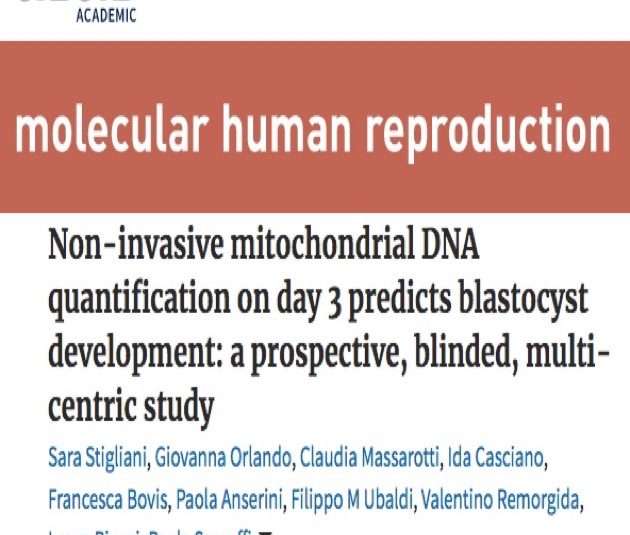
Stigliani S, Orlando G, Massarotti C, Casciano I, Bovis F, Anserini P, Ubaldi FM, Remorgida V, Rienzi L, Scaruffi P
Mol Hum Reprod. 2019 Jun 7. pii: gaz032. doi: 10.1093/molehr/gaz032.
ABSTRACT
In ART, embryo quality evaluation is routinely based on morphological criteria. We previously demonstrated that the mitochondrial DNA (mtDNA)/genomic DNA (gDNA) ratio in culture medium was significantly associated with embryo quality and viability potential. The purpose of this prospective, blinded, multi-centric study was to validate the use of mtDNA/gDNA ratio in day 3 spent medium as a predictor of human embryo developmental competence. The mtDNA/gDNA ratio was assessed in day 3 culture media (n=484) of embryos from 143 patients by quantitative PCR. A mixed effect logistic regression model was applied. We found that mtDNA/gDNA ratio in day 3 culture medium combined with embryo morphology improves the prediction upon blastulation compared to morphology alone (P<0.0001), independent of patient and cycle characteristics. With regard to routine use in clinics, we evaluated the ability of the novel, combined grading score to improve selection of developmentally competent embryos of a single cohort. Including embryos from 44 patients, the sensibility and specificity of the scoring system based on day 3 morphological stage were 92% and 13%, respectively. Integration with the culture medium mtDNA/gDNA ratio increased the performance of the method (sensibility: 95%; specificity: 65%). The results of this study suggest the possibility of carrying out a non-invasive evaluation of embryonic mtDNA content through the culture medium. When combined with embryo morphology, it has the potential to help embryologists rank embryos and choose which embryo(s) has the greater development potential, and thus should be transferred on day 3, among sibling embryos with the same morphological grade.
KEYWORDS: blastocyst / cell-free DNA / human embryos / mitochondrial DNA / non-invasive embryo evaluation